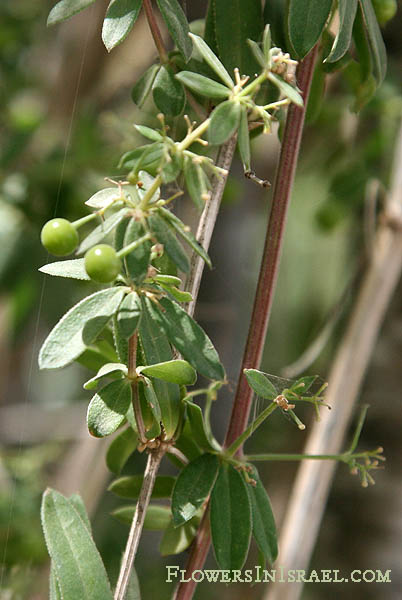פואה מצוי
| Scientific name: | Rubia tenuifolia D’Urv. | |
| Common name: | Narrow-leaved Madder | |
| Hebrew name: | פואה מצויה | |
| Family: | Rubiaceae, פואתיים |

|
| Life form: | Phanerophyte shrub, climber | |
| Leaves: | Whorled, entire, smooth | |
| Flowers: | Cream, yellow | |
| Fruits / pods: | a black berry | |
| Flowering Period: | March, April, May | |
| Habitat: | Mediterranean maquis and forest | |
| Distribution: | Mediterranean Woodlands and Shrublands, Semi-steppe shrublands, Montane vegetation of Mt. Hermon | |
| Chorotype: | Mediterranean | |
| Summer shedding: | Perennating |

Derivation of the botanical name: Rubia, Latin ruber, red; in allusion to the reddish dye obtained from the roots of these herbs. tenuifolia, tenuis, thin, fine, slim, slender; folia, leaf; slender leaved. The Hebrew name: פואה, poea (Post Biblical Hebrew), madder; related to Aramaic: פוחא, poeha, Arabic: فوة fuwwah (=madder).
|